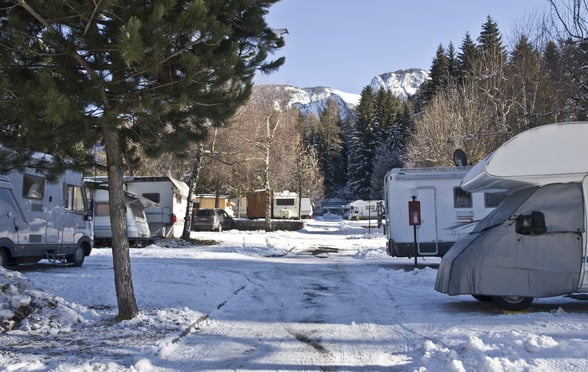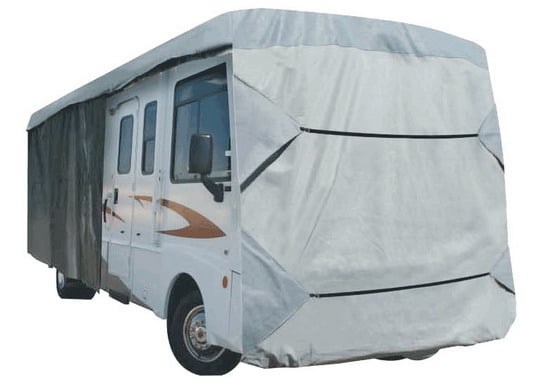Now that the autumn season is upon us, RV and travel trailer owners are putting their vehicles away for the winter. Many of them will use an RV or trailer cover to protect their units from the weather. There are pros and cons to this strategy, as evidenced by the fair amount of disagreement that exists among RV and trailer owners. We will let you decide whether it’s the right strategy for you or not.
With that said, we do have some helpful tips should you decide to cover your RV or trailer with a winter cover. The tips are designed to make sure your cover does not damage your vehicle during the winter months. We want you to be able to uncover and go next spring without any problems.
1. Properly Secure Your Cover
Make sure to properly secure your cover with bungee cords or ropes. You do not want any portion of the cover to be loose enough to flap in the wind. Any flapping can cause cosmetic damage to the outside of your vehicle by way of grommets striking the surface. Continual striking can even loosen the grommets.
2. Create a Crown
It is a good idea to create a slight crown across the top of your vehicle so that the cover is not laying flat on the roof. Modern vehicles have air-conditioning units that make this task easier. You can also use things such as foam blocks and winter swimming pool inflatables to create the crown. The point is to create a surface that will allow precipitation and leaves to run off the top rather than collecting on the roof of your vehicle.
3. Check Cover Condition
Unless you are using a brand-new cover right out-of-the-box, it is a good idea to inspect your cover before putting it on. You are looking primarily for holes that can allow moisture in. The problem with moisture is that if it becomes trapped under the cover, it could cause a number of problems. Caulking could become moldy, aluminum parts could start to rust, and so on. You want the surface underneath to remain completely free of moisture throughout the winter months.
4. Beware of Abrasion
RV and trailer covers will not usually suffer rips and tears under normal conditions. The enemy of these covers is abrasion. You can get the most life out of your cover by reducing exposure to abrasive surfaces such as mirrors (fold them in), antennas (retract them), and roof vents (close them). If there are any potentially abrasive surfaces around windows or doors, you can reduce the friction by using foam padding or electrical tape.
Ordering a new RV or trailer cover is a matter of getting the right size. Although you do not want a cover that is excessively large, having one that is slightly too big is definitely better than purchasing one that is too small. The good news is that covers come in standard sizes. You just need to measure the length, width, and height of your unit to know what to order.
For RVs, measure the length from tail to nose and the height from the roofline down to the bottom of the chassis. Do not measure down to the ground. Also, there is no need to account for air-conditioning units. Manufacturers already take them into consideration when designing their covers.
For trailers, measure the height the same way. For length, there is no need to account for the tongue. You only need to measure the actual size of the trailer shell. Width measurements are pretty straightforward regardless of the RV or trailer unit you have.












